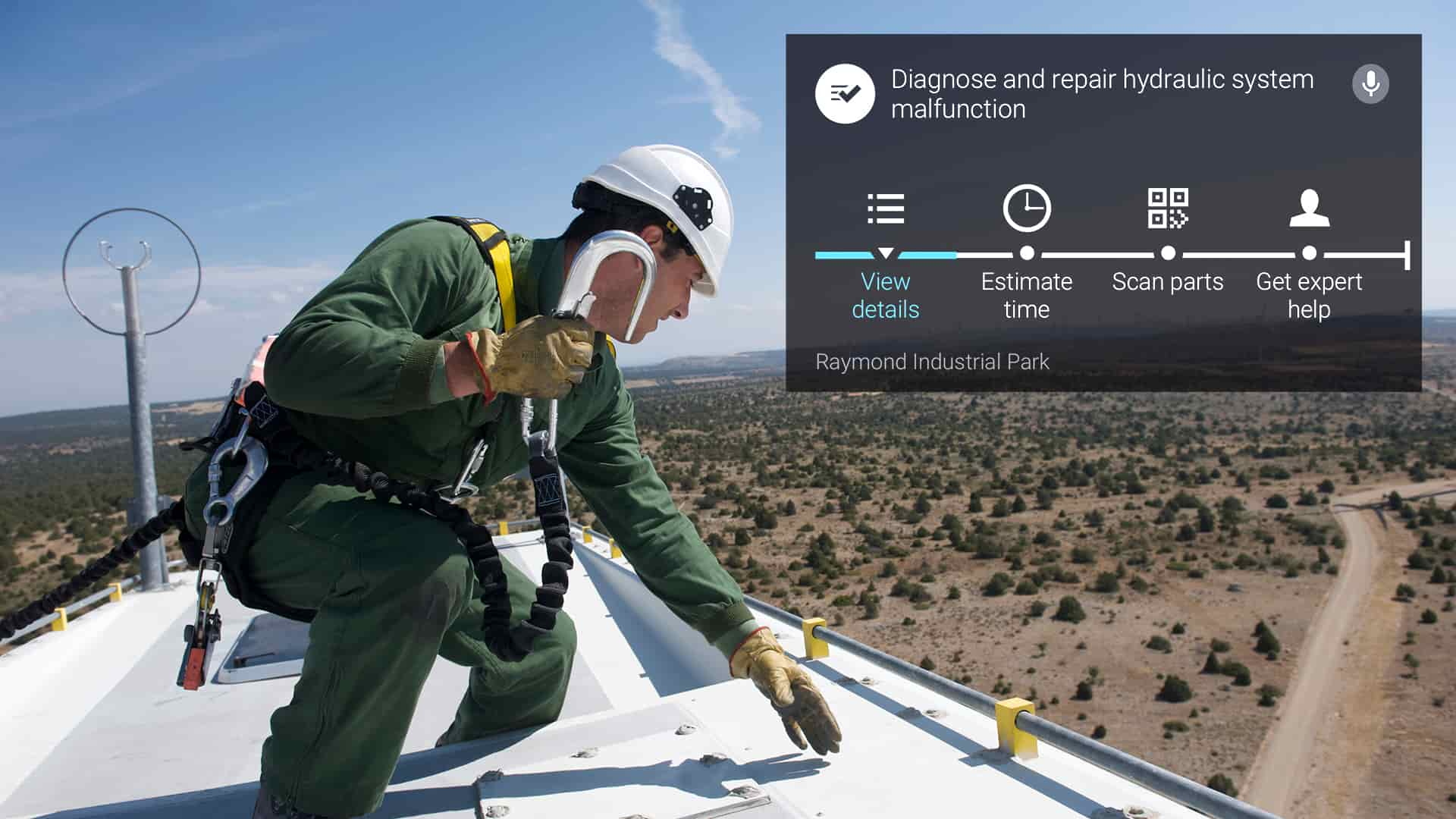
T
hough we spend ample time examining consumer-based AR endpoints, greater near-term impact is seen today in the enterprise. This takes many forms including camera commerce and collaboration. But the greatest area of enterprise AR impact today is in industrial settings.
This includes AR visualization to support assembly and maintenance. The idea is that AR’s line-of-sight orientation can guide front-line workers. Compared to the “mental mapping” they must do with 2D instructions, line-of-sight support makes them more effective.
This effectiveness results from AR-guided speed, accuracy, and safety. These micro efficiencies add up to worthwhile bottom-line impact when deployed at scale. Macro benefits include lessening job strain and the “skills gap,” which can preserve institutional knowledge.
But how is this materializing today and who’s realizing the above enterprise AR benefits? Our research arm ARtillery Intelligence tackled these questions in its report: Enterprise AR: Best Practices & Case Studies, which we’ve excerpted below, featuring KPN’s AR deployment.
Operational Scale
KPN is the leading telecom provider in the Netherlands. Serving 33 million mobile and fixed-line subscribers in the country and throughout Europe, there’s a good chance that anyone you call in the Netherlands is picking up the call through a KPN connection.
This operational scale means – like several large telcos – that there’s a perpetual challenge in maintaining network equipment and uptime. The company employs 3,000 field technicians, and dispatches them to do everything from routine maintenance to repairing base stations.
For the latter, the process traditionally involves field technicians receiving work orders by phone. That prompts them to drive to a given location, where they then locate the equipment in need of service, diagnose the problem, and ultimately execute the repair work.
Throughout this process, technicians often require guidance based on the complexity and variability of the equipment they’re servicing. This often means that they have to locate equipment manuals, retrieve diagnostic data or call a central office for expert guidance by voice.
These low-tech ways to solve high-tech problems lead to inefficient operations, wasted time, or ineffective repairs. That ineffectiveness can in turn be an expensive problem because it sometimes means that field technicians have to be dispatched for a second visit.
Scarcest Asset
With an eye towards improving operational efficiencies and repair success rates, KPN enlisted Accenture to devise an AR-based solution to guide field technicians in more streamlined ways. The result was a customized combination of Google Glass and Upskill Skylight.
Goals for the new program included improving speed, safety, repair quality, and first-time close rates. KPN also wanted to placeshift and stretch the value of its scarcest asset: seasoned technician expertise. It wanted to give new hires seamless access to this senior talent.
The result of the program was a connected and hands-free process. Equipped with smart glasses and AR software, field technicians were able to gain line-of-sight access to the same repair instructions, diagnostics, and live remote help from seasoned experts.
But rather than the traditional workflow, new orders were automatically pulled from the KPN queue and delivered to smart glasses in the field through the Skylight software. Technicians could then be guided to the right on-site equipment using Bluetooth beacons.
Through Google Glass, they could also receive live feeds of network diagnostics, offering a real-time feedback loop of their work status. This step alone saved considerable time versus the previous practice of stopping to check analog and physically-separated diagnostics.

Results-Oriented
To quantify these results, KPN’s AR adoption led to 5 percent faster job completion, 11 percent lower operating costs, and 17 percent improved work error rates. These are meaningful improvements when applied across KPN’s operational scale.
Adding to these benefits, field techs using the Skylight/Glass combination could initiate live video calls with experts in a central location to then be guided with the benefit of “see what I see” support. Technicians could also use voice to close cases when complete.
The remote support feature is particularly valuable, due to the above-mentioned goal of stretching the value of KPN’s seasoned experts. By turning them into centrally-located experts, they can cover more ground through the telepresence of remote AR.
Repeating a common thread seen throughout this report, this AR program was also able to gain the loyalties and buy-in of field technicians, as they saw its benefits to their day-to-day work. This is a key component, as the technology is meaningless if there’s no buy-in.
“I wasn’t very familiar with smart glasses before this project,” a KPN field technician told Upskill, “but after using them with Skylight, I found it simple to use and helpful for my job. It is exciting for us to get this new technology.”
We’ll pause there and circle back in the next installment with another enterprise AR case study…

